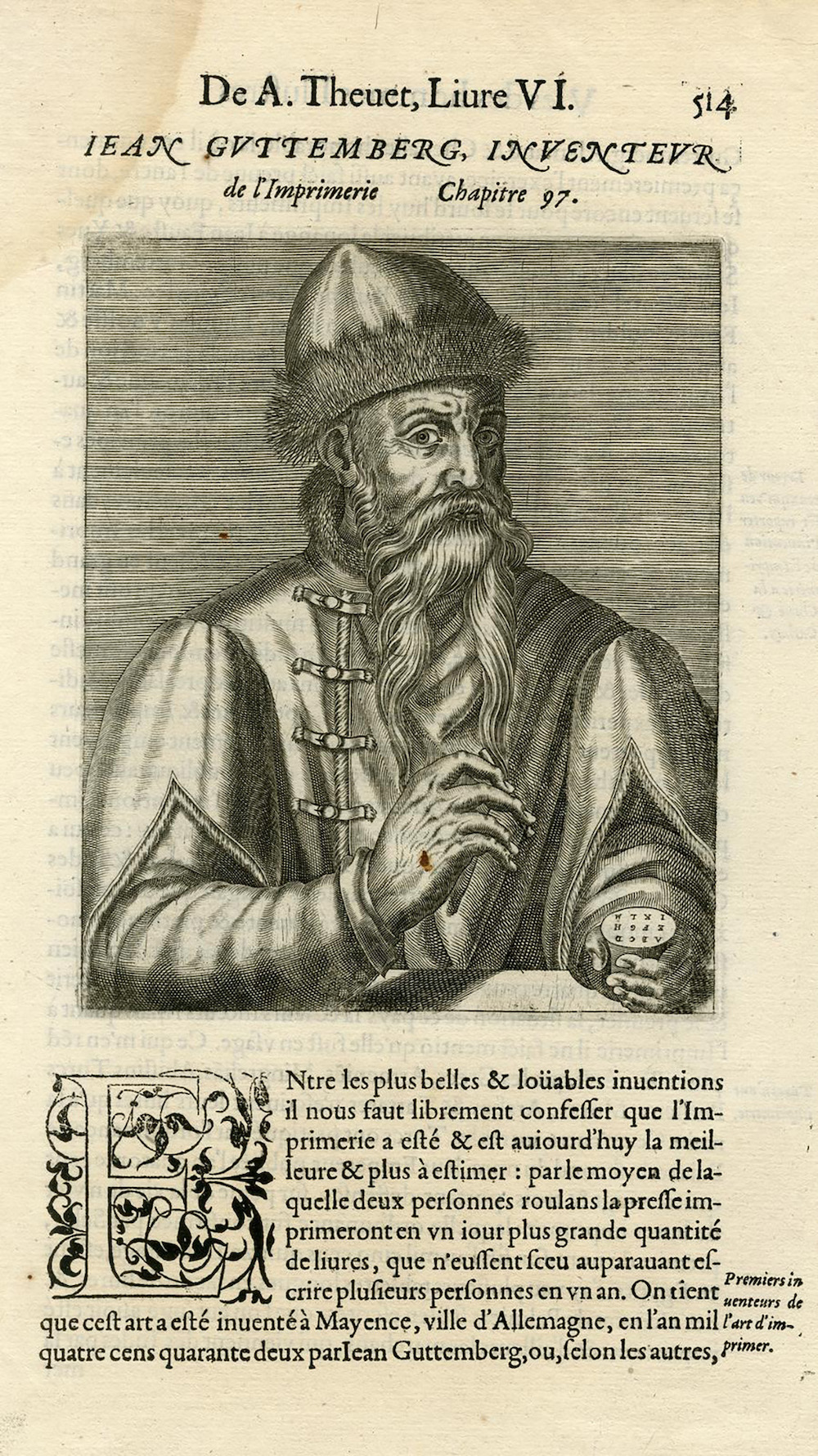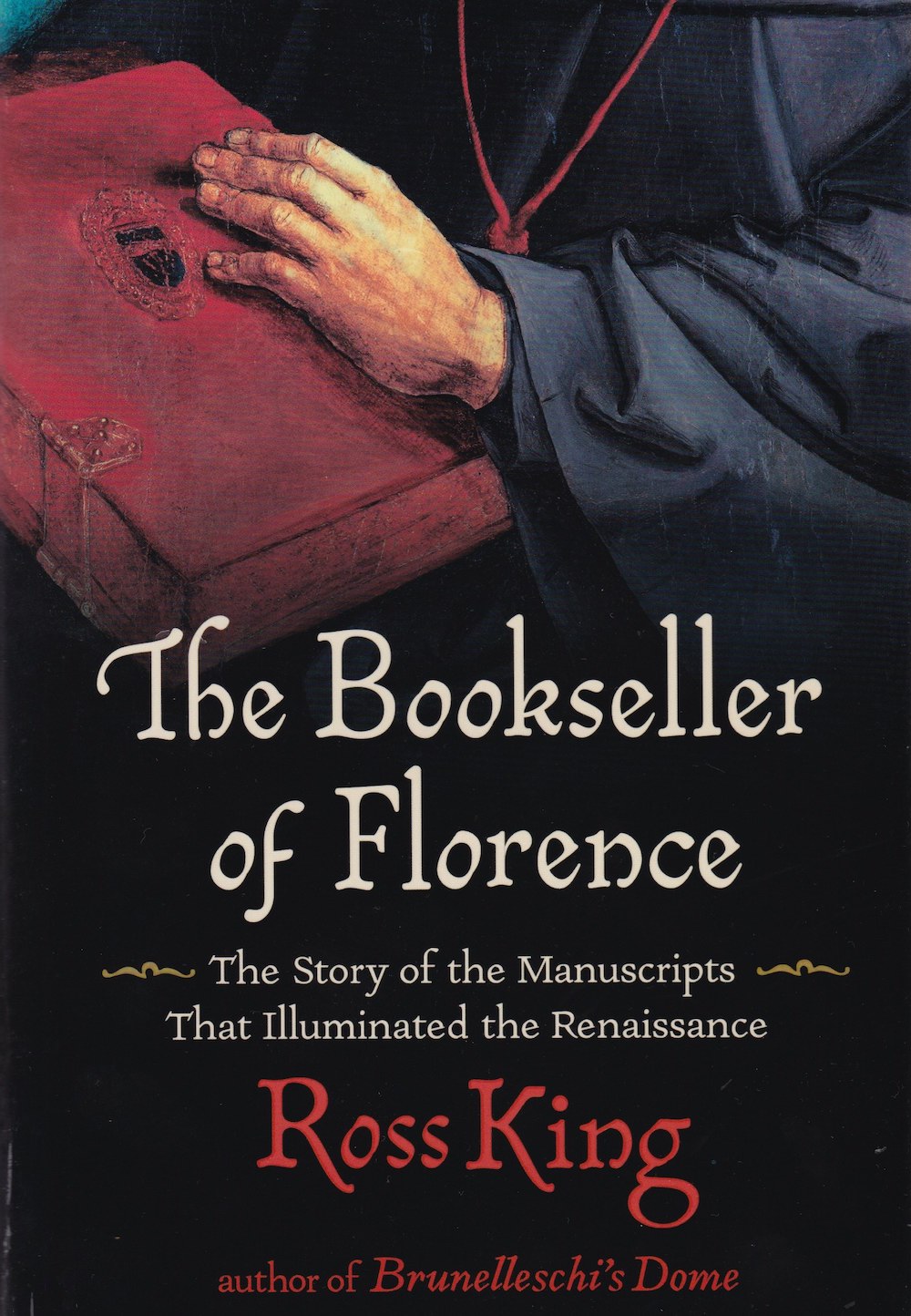The Bookseller of Florence: The Story of the Manuscripts That Illuminated the Renaissance
By Ross King
496 pages
Atlantic Monthly Press
“All evil is born from ignorance. Yet writers have
illuminated the world, chasing away the darkness.”
—Vespasiano da Bisticci
Ross King has published several fastidiously researched and precisely articulated books of Renaissance art history. His Brunelleschi’s Dome, a tiny volume tracing the construction of the largest dome since Ancient Rome, became a runaway bestseller in 2013. That volume followed his books about Michelangelo (2002), Machiavelli (2009) and Leonardo (2012). King’s oeuvre is beautifully crafted and clearly conceived, belying all the stereotypes about dense, pretentious art writing.
His newest production, The Bookseller of Florence, focuses on manuscript publisher and distributor Vespasiano da Bisticci (1421–1498). Vespasiano’s career straddled the explosive increase of manuscript production and the world-changing introduction of printed books during the quattrocento.
King introduces his readers to an astonishing array of collectors: popes and sultans, merchants and mercenaries, dukes, bankers, scholars and priests. He also traces the intense power struggles—many of which ended in warfare—that tormented the early Renaissance. My only criticism of the book is that King refers to so many historic figures that it is sometimes difficult to discern who is what and when.
One of the key characters we meet is Johannes Gutenberg, who is credited with inventing the movable-type printing press in 1440. (In fact, such devices actually appeared in Asia centuries earlier: The Koreans had bronze-cast movable type by 1200.) King maps the spread of printing presses across Europe. The first printing press in Florence opened in 1471. Five years later, Venice had 18 printers. By 1500, there were 255 presses operating in Europe. Between 1454 and 1500, over 12.5 million printed books appeared on the continent.

Iean Guttenberg, Inventeur / de l’Imprimerie; illustration extracted from Andre Thevet’s ‘Pourtraits et Vies des Hommes Illustres,’1584. ©The Trustees of the British Museum.
Florence is central to King’s story, in part because it had such a high literacy rate: Almost seven in every 10 adults—including female adults—could read. In contrast, most other European cities had literacy rates of less than 25 percent. Largely because of the rediscovery and re-valuation of books by ancient writers like Plato and Aristotle, Florence became the center of the revival of antiquity that led to the “revolution in knowledge” we call the Renaissance. One scholar argued that the recovery and translation of Plato into Latin was “the most important achievement of 15th-century scholarship.” Another called Florence “Athens on the Arno.”
Vespasiano and his clients sought to translate great works from the ancients in order to create “a safer and more stable society.” Ancient Rome had more than 20 public libraries. Many of Florence’s wealthy and powerful—including several of the Medicis—hired Vespasiano to help them build their own libraries, seeking to establish their earthly status and insure their lasting legacy.
One of the delights of King’s text is his repeated turns of etymology. He discusses the origins of words like bibliography and bible, page and volume, book and library. The word for pen comes from the Latin penna or feather. Colophon, which derives from a Greek word meaning hilltop or summit, came to refer to a finishing touch or crowning stroke, before it mutated into reference to the publisher’s final addendum to a text. Vespasiano not only pioneered the use of colophons, he and his scribes also began the practice of title pages.
King dubs one of his chapters “Wondrous Treasures” and indeed, he presents many historical and intellectual treasures as he marches through Vespasiano’s world. I recommend his book to anyone eager to understand the context of Renaissance art, or of the Renaissance in general.


